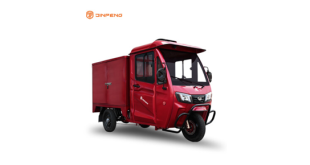Four of these ‘“cars” were made, and for each minute they were driven for their intended purpose, they cost over $58,000. NASA’s Lunar Roving Vehicle (“LRV”) was known as the Moon Buggy, and the most expensive “Rover” ever built! Maybe fittingly, Americans were the first to drive on the Moon. One LRV was even involved in a minor accident. When one of the Rover’s fenders became detached, astronauts used tape to fix it back on, so severe was the dust cloud without it.
Wheeled transport to give astronauts a wider Moon range was first envisaged in the early 1960s by NASA rocket scientist Dr. Wernher von Braun. In July 1969, two weeks before the epoch-making Apollo 11 mission, tenders to build a suitable vehicle were invited. The $19.6 million contract was won by Boeing and subcontractor General Motors, in time for Apollo 15 by April 1971.
The aluminum rover was compacted for the space journey, its wheels folding out in the automated unloading process. Its articulated chassis had front and rear steering for maximum maneuverability, and woven steel thread tires with titanium tread for best grip. Electric motors were fed by high-energy batteries.
The LRV was controlled by a T-shaped joystick, and Velcro seatbelts were provided. The umbrella-like antenna beamed live footage back to Mission Control during the vehicles’ sample- and data-gathering forays. Four LRVs were built and first drove on the Moon on July 31, 1971. Between them, they covered 56 miles (90km)
Zagato Zele 1000
Throughout the 1950s and 1960s, Italian coachbuilder Zagato was a byword for motoring excitement—a dream factory making strikingly styled sports cars. So no wonder visitors to the 1972 Geneva Motor Show were shocked at the company’s display. It’s new car was 77in (196cm) long, and could manage 25mph (40kph) in eerie silence.
AMC Pacer
Caught out by the fuel crisis of the mid-1970s, US carmakers simply did not offer the right cars. They could only look on aghast as economical Japanese imports snatched their sales. The panic to compete sired some terrible emergency products, such as the Ford Pinto, which developed a tendency to catch fire in rear-end collisions. The AMC Pacer, meanwhile, took a more considered approach, but its fate was, sadly, overtaken by events.
Lepoix ding
The French-born industrial designer Louis Lepoix was probably best known for his commercial vehicles and household products through his consultancy Form Technic International. However, at the 1975 Frankfurt Motor Show, he unveiled a pair of astonishing electric cars.
The Lepoix Shopi was, at first glance, a three-wheeler, although it actually had two tiny front wheels set close together. As the name implied, it was a 58in- (147cm-) long, golf-cart-like runabout intended for trips to local stores and, because it used a 24-volt electric motor fed by batteries, it was a zero-emissions vehicle.
Lotus esprit
No two-seater, mid-engined sports car in the world has had a longer life than the Esprit, on sale from 1976 to 2004. The car came about when Lotus founder Colin Chapman decided to update his Europa. But, instead of using his own stable of designers, Chapman chose a young Italian he met by chance, Giorgetto Giugiaro.
The result was low-slung and ultra-wedge-shaped, a racing car for the road that you had to be agile just to climb into. It was built around Lotus’s famed “backbone” chassis, with the engine centrally located behind the driver’s shoulders.
Last word
The prototype caused a sensation at the 1972 Turin Motor Show. The wider world, however, came to know the Esprit through the movies. In an astute “product placement” deal, Chapman persuaded producers of the James Bond films to feature his Esprit in the 1977 film The Spy Who Loved Me.
Roger Moore’s white example was as fast at sea as it was on the road, in one memorable scene being driven by Bond underwater—and, to the surprise of sunbathers, out onto the beach.
 Magazine Today
Magazine Today

